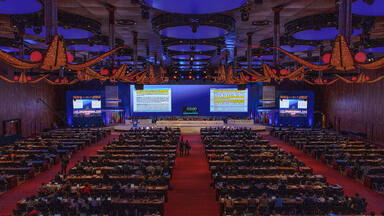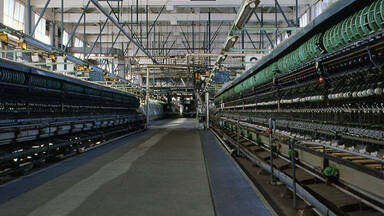Tomioka Silk Mill and Related Sites
Tomioka Silk Mill and Related Sites
This property is a historic sericulture and silk mill complex established in the late 19th and early 20th century in the Gunma prefecture, north-west of Tokyo. It consists of four sites that correspond to the different stages in the production of raw silk: a large raw silk reeling plant whose machinery and industrial expertise were imported from France; an experimental farm for production of cocoons; a school for the dissemination of sericulture knowledge; and a cold-storage facility for silkworm eggs. The site illustrates Japan’s desire to rapidly access the best mass production techniques, and became a decisive element in the renewal of sericulture and the Japanese silk industry in the last quarter of the 19th century. Tomioka Silk Mill and its related sites became the centre of innovation for the production of raw silk and marked Japan’s entry into the modern, industrialized era, making it the world’s leading exporter of raw silk, notably to Europe and the United States.
Description is available under license CC-BY-SA IGO 3.0
Filature de soie de Tomioka et sites associés
Créé en 1872, ce complexe historique séricicole et de filature de la soie se situe dans la préfecture de Gunma, au nord-ouest de Tokyo. Construit par le gouvernement, avec des machines importées de France, il se compose de quatre sites qui correspondent aux différentes étapes de la production de soie grège : élevage des cocons dans une ferme expérimentale ; site de stockage des graines (œufs des vers à soie) dans des caves à température constante ; dévidage des cocons et filature de la soie grège en usine ; magnanerie-école pour la diffusion des connaissances séricicoles. Le site illustre la volonté du Japon d’accéder rapidement aux meilleures techniques de la production de masse et il a été un élément décisif du renouveau de la sériciculture et de la soierie japonaise dès le dernier quart du XIXe siècle. Il témoigne de l’entrée du pays dans le monde moderne industrialisé. Le Japon va devenir le leader de la production séricicole et le premier exportateur mondial, notamment vers la France et l’Italie.
Description is available under license CC-BY-SA IGO 3.0
Фабрика по производству шелка в городе Томиока и сопутствующие объекты
Эта историческая фабрика по производству шелка, расположенная в префектуре Гумма к северо-западу от Токио, была основана в 1872 году. Она была построена правительством Японии и оснащена оборудованием, импортированным из Франции. Фабрика состоит из четырех объектов, соответственно различным этапам производства шелка-сырца: экспериментальная ферма для выращивания шелкопряда, холодные помещения для хранения грены, фабрика для обработки коконов и намотки шёлковой нити в бобины, также школа обучения технологии шелководства. Фабрика Томиока свидетельствует о движении Японии к быстрому освоению лучших методов массового производства. Она сыграла решающую роль в возрождении шелководства и восстановлении шелковой промышленности страны в последней четверти XIX века. Эта фабрика ознаменовала вступление Японии в современную промышленную эпоху и помогла стране стать ведущим мировым экспортером шелка-сырца, в частности, во Францию и Италию.
source: UNESCO/CPE
Description is available under license CC-BY-SA IGO 3.0
Manufactura de seda de Tomioka y sitios conexos
Ubicado en la prefectura de Gunna, al noroeste de Tokio, este complejo industrial de producción e hilado de seda se creó en 1872. La manufactura, construida por el gobierno japonés y equipada con maquinaria importada de Francia, consta de cuatro partes distintas, correspondientes a las diferentes etapas de producción de la seda bruta: un almacén refrigerado para los huevos de los gusanos; una granja experimental para producir los capullos; una factoría para desenrollar la fibra de éstos e hilar la seda bruta; y un centro de enseñanza para difundir conocimientos relacionados con la sericicultura. Este sitio, que ejemplifica el afán del Japón por adoptar las técnicas más avanzadas de producción en masa, no sólo llegó a ser un elemento decisivo de la renovación de la sericicultura japonesa en el último cuarto siglo XIX, sino que además marcó un hito en la entrada del país en la moderna era industrial, convirtiéndolo en el primer exportador mundial de seda bruta, destinada principalmente a Francia e Italia.
source: UNESCO/CPE
Description is available under license CC-BY-SA IGO 3.0
富岡製糸場と絹産業遺産群
明治時代以降の日本の生糸の大量生産に貢献した、富岡製糸場をはじめとする4つの資産。養蚕技術の改良と教育機能を果たした2ヵ所の民間施設、風穴を利用した蚕種貯蔵施設と製糸場が連携し、生糸の大量生産システムを確立したことを物語る。フランスの蚕糸業技術の日本への移転に成功した初期の事例であり、19世紀末期に養蚕・製糸業の革新に決定的な役割を果たすことで、日本が近代工業化世界に仲間入りする鍵となった。製糸場の巨大建物は、西洋と日本の要素を結合させた日本特有の工場建築様式である。source: NFUAJ
Zijdemolencomplex van Tomioka
Het Zijdemolencomplex van Tomioka bevindt zich in de prefectuur Gunma ten noordwesten van Tokio. Het historische complex werd in 1872 gesticht en ontwikkeld door het Japanse Gouvernement met uit Frankrijk geïmporteerde machines. Het erfgoed bestaat uit vier locaties die getuigen van de verschillende fases in de productie van ruwe zijde. Ten eerste de experimentele kwekerij voor de coconproductie. Daarnaast een koele opslagplek voor zijdewormen. Verder de molen waar de cocondraden worden gehaspeld en ruwe zijde wordt gesponnen. En tot slot een school voor onderwijs over de zijdecultuur. De vier plekken illustreren de Japanse wens om snel de beste massaproductietechnieken toe te passen. Het zijdemolencomplex werd een beslissend element in de vernieuwing van de zijdecultuur en de Japanse zijde-industrie in de laatste 25 jaar van de 19e eeuw. Het markeerde de intrede van Japan in het moderne, geïndustrialiseerde tijdperk en zorgde voor wereldleiderschap in de export van ruwe zijde, vooral ten opzichte van Frankrijk en Italië.
Source: unesco.nl
Outstanding Universal Value
Brief synthesis
The Tomioka Silk Mill dates from the early Meiji period. With its related sites including two sericulture schools and an egg storage site, it illustrates the desire of Japan, a traditional silk producer, to rapidly access the best mass production techniques. The Japanese government imported French machinery and industrial expertise to create an integrated system in Gunma Prefecture. It included egg production, silkworm farming and the construction of a large mechanised raw silk reeling and spinning plant. In turn, the Tomioka model complex and its related sites became a decisive component in the renewal of sericulture and the Japanese silk industry, in the last quarter of the 19th century, and a key element in Japan’s entry into the modern industrialised world.
Criterion (ii): The Tomioka mill illustrates the early and entirely successful transfer of French industrial sericultural techniques to Japan. This technological transfer took place in the context of a long regional tradition of silkworm farming, which it profoundly renewed. In turn, Tomioka became a centre for technical improvements and a model that enshrined Japan’s role in the global raw silk market at the beginning of the 20th century, and which bears witness to the early advent of a shared international culture of sericulture.
Criterion (iv): Tomioka and its related sites form an outstanding example of an integrated ensemble for the mass production of raw silk. The extent of the plant, from its initial design, and the deliberate adoption of the best Western techniques illustrate a decisive period for the spread of industrial methods to Japan and the Far East. Its large, late 19th century buildings provide an eminent example of the emergence of a style of industrial architecture specific to Japan, combining foreign and local elements.
Integrity
The integrity of the serial property’s composition is good, illustrating the idea of a productive complex for an intermediate textile product: raw silk. The structural and functional integrity of each of the components is more uneven and at times difficult for the visitor to understand, notably the Takayama-sha sericulture school and Arafune cold storage. The landscape integrity, as it relates to the buffer zones, requires particular attention.
Authenticity
The authenticity of the components presented is generally satisfactory in terms of its various dimensions of structure, form and materials. The perceived authenticity is remarkable at the Tomioka mill, which has retained its complete textile machinery. The restoration activities at the Arafune site must remain within a strictly controlled framework in terms of its authenticity, which must remain archaeological in nature.
Protection and management requirements
Each of the four sites comprising the serial property is protected by Japan’s Law for the Protection of Cultural Properties. The main buildings are also protected as cultural properties of national importance. Under the application of this law, each of the sites is covered by a conservation and management plan already in place under the aegis of the cities and municipalities, including in the case of the privately owned Tajima Yahei (S2). Continuing this protection policy, the buffer zones correspond with a desire to control the urban and natural environments using measures that are, in theory, stringent. The management system relies on the competent services of the municipalities, the Commission for Cultural Affairs of the Gunma Prefecture and a series of scientific institutions involved in the regional silk heritage, and volunteer associations. The Coordination Committee, established in spring 2012, is an overarching body responsible for coordinating the actual operation.

 View photos from OUR PLACE the World Heritage collection
View photos from OUR PLACE the World Heritage collection
